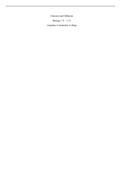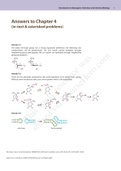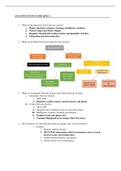Bioo - Samenvattingen, Notities en Examens
Op zoek naar een samenvatting over Bioo? Op deze pagina vind je 17 samenvattingen over Bioo.
Pagina 2 van de 17 resultaten
Sorteer op

-
BIOOGY 111- C11 Osmosis and diffusion
- Tentamen (uitwerkingen) • 14 pagina's • 2021
-
- €15,23
- + meer info
BIOOGY 111- C11 Osmosis and diffusion/BIOOGY 111- C11 Osmosis and diffusion/BIOOGY 111- C11 Osmosis and diffusion/BIOOGY 111- C11 Osmosis and diffusion/BIOOGY 111- C11 Osmosis and diffusion/BIOOGY 111- C11 Osmosis and diffusion/BIOOGY 111- C11 Osmosis and diffusion/BIOOGY 111- C11 Osmosis and diffusion/BIOOGY 111- C11 Osmosis and diffusion

-
Samenvatting H13 Microbioom voedingsstoffen en ingrediënten semester 2
- Samenvatting • 3 pagina's • 2021
- Ook in voordeelbundel
-
- Gratis
- 5x verkocht
- + meer info
Samenvatting H13 Microbioom voedingsstoffen en ingrediënten semester 2, jaar 1 voedings- en dieetkunde

-
Introduction to Bioorganic Chemistry and Chemical Biology: ANSweRS To CHAPTeR 6
- Tentamen (uitwerkingen) • 8 pagina's • 2021
-
- €17,20
- + meer info
Answer 6.1 Solve the equation. Convert temperature in °C to K by adding 273. Plug the numbers into ΔG = ΔH – TΔS. Kassociation = e–ΔG/RT. This is the equilibrium constant for association, so take the inverse: Kd = 1/Kassociation. Calculated using Kd = koff/kon: Answer 6.3 when the concentration of NADH is 3 × 10–7 M, the ratio of bound to unbound alcohol dehydrogenase is 1:1. From there, the ratio of bound to unbound enzyme can easily be estimated at other concentrations of N...

-
Introduction to Bioorganic Chemistry and Chemical Biology: Chapter 4 Answers
- Tentamen (uitwerkingen) • 7 pagina's • 2021
-
- €12,28
- + meer info
Answer 4.1 The bulky tert-butyl group has a strong equatorial preference, the following two conformations will be predominant. The anti isomer cannot hydrolyze through neighboring group participation; the syn isomer can hydrolyze through neighboring group participation. OCH3 -O P O O :O- anti Introduction to Bioorganic Chemistry and Chemical Biology | A4096 OCH3 -O P O O.. -O Van Vranken & Weiss | 978-0-8153-4214-4 Answer 4.2 There are two plausible mechanisms that av...

-
Introduction to Bioorganic Chemistry and Chemical Biology: Chapter 7 answers
- Tentamen (uitwerkingen) • 6 pagina's • 2021
-
- €12,28
- + meer info
Answer 7.4 Compounds with the strongest axial donor lone pair would exhibit the strongest preference for an axial or Group Answer 7.5 In lubiprostone, the CF2 group should favor the cyclic hemiketal relative to the parent compound with CH2 Answer 7.6 the trend of faster hydrolysis of α-glucopyranosides holds for a wide range of glycosidic derivatives. Oddly, methyl α-d-glycosides (such as gluco, galacto, and xylo) hydrolyze more slowly than the corresponding β-anomers. © design by t...
ANATOMY_STUDY_GUIDE_QUIZ_21050
simple easy notes

Die samenvatting die je net hebt gekocht, heeft iemand erg blij gemaakt. Ook wekelijks uitbetaald krijgen? Verkoop je studiedocumenten op Stuvia! Ontdek alles over verdienen op Stuvia




